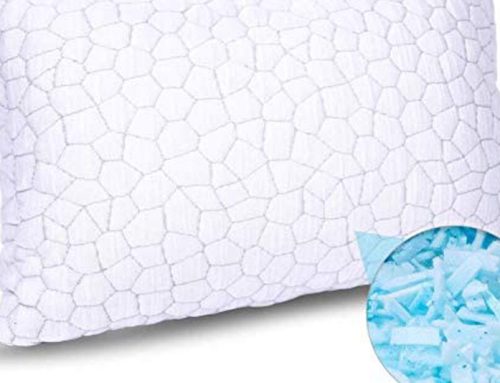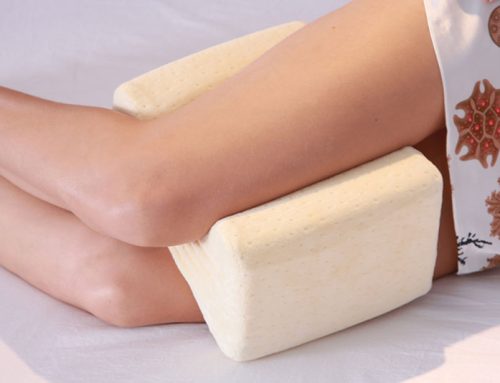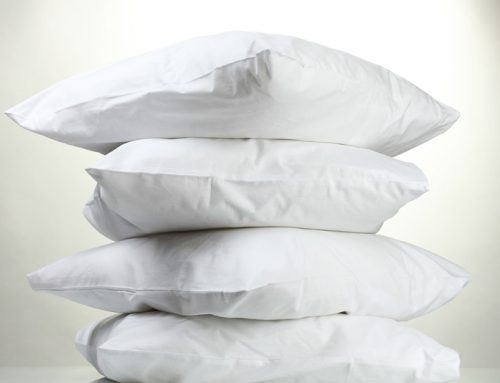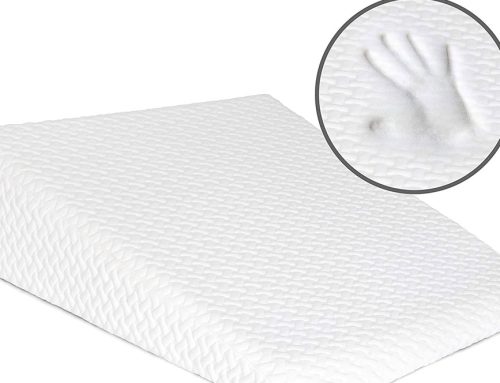If you’re looking to the get a great night’s sleep, you’ll want to invest in the best bedding, which includes your pillow. Here we compare memory foam pillows vs regular pillows to see which one offers the most benefits, helping you make the right choice.
What is memory foam?
Memory foam is a unique material which reacts to pressure and heat. When you lie down, it responds to your body, moulding around your head and neck to give you a personalised level of support. Those who love memory foam pillows find them extremely comfortable.
What are regular pillow flings?
There are two other main types of regular pillow fillings: synthetic or natural.
- Synthetic pillows normally have a cheaper polyester filling which is usually very soft and lightweight. These pillows aren’t as supportive and don’t last very long, so are only good if you’re looking for the cheapest option.
- Natural pillows are usually filled with bird feathers, down or both. These pillows are also very light and soft, so frequently need fluffing up to stop them going flat. Down pillows are more expensive and often seen as a luxury choice.
What makes memory foam pillows better than regular pillows?
Memory foam pillows mould to the shape of your head and neck, offering custom support and comfort, which is why they’re considered to be better than regular pillows. Other pillows are too soft to fully support you, which can result in back and neck pain, plus an uncomfortable sleep.

Advantages of memory foam pillows
- Spine support, as memory foam pillows keep your body in a neutral position while you sleep, so your spine is properly aligned.
- Relieves back and neck pain by keeping your spine in the correct position. Memory foam helps alleviate other pressure points too, like your hips or shoulders.
- Durable – these pillows are resilient and only need to be replaced every 18-36 months.
- Long-lasting comfort, as memory foam pillows don’t need to be constantly fluffed. They gradually spring back to their original shape when heat and pressure are removed.
- Anti-allergy – memory foam pillows are hypoallergenic, so they resist dust, mould and bacteria and are less likely to trigger allergy symptoms.
- Prevent snoring by keeping your head and neck elevated, so your airways are clearer. This can help to prevent snoring.
Disadvantages of memory foam pillows
- Heat – memory foam pillows retain your body heat so can feel hotter to sleep on. If you prefer to keep cool at night, opt for a gel-infused memory foam pillow that will give you a more refreshing sleep.
- Price, as memory foam pillows are long-lasting and high-quality, plus have a unique support system, they are more expensive than synthetic fillings.
- Need to be broken in. Memory foam pillows can feel firm at first, but they just need a few minutes to soften as they adapt to your body. They also commonly have a chemical smell when they’re brand new, but this will fade away after a few days.
Advantages of regular synthetic pillows
- Cost – synthetic fillings like polyester are normally the cheapest option available.
- Soft feeling, which is good for sleepers who need little support.
- Easy to care for, as normally synthetic pillows can be machine washed and don’t need to be fluffed as often to keep their original shape.
Disadvantages of regular synthetic pillows
- Short lifespan, since synthetic pillows are cheaper, they generally don’t last as long as other pillows.
- Not supportive, as these pillows are very soft. They’re not good if you need your head and neck supporting through the night.
- Heat, because polyester isn’t a very breathable material, synthetic pillows can feel very hot and uncomfortable in the summer months.
Advantages of regular down pillows
-
Extremely soft, as these pillows are filled with the underside of a bird’s feathers, usually from ducks or geese.
-
More supportive than synthetic – while down pillows are still very soft, they have more filling inside the pillow so can offer better support than synthetic options.
-
Luxury feel, with goose down thought as the most luxurious choice, although it does have a price tag to match.
- Durable, since down fillings will last a long time if they’re maintained correctly.
Disadvantages of regular down pillows
- Not as supportive as memory foam. Down pillows provide the same level of support to everyone, whereas memory foam is tailored depending on your body shape.
-
Trigger allergies, as down pillows are made from animal products which can worsen your allergy symptoms.
-
Can get lumpy – down pillows often get lumps because the filling compresses easily when pressure is applied.
- Animal welfare may be affected by down pillows, as they’re ultimately created using an animal product. You can find ethical options such as ‘like down’ pillows as an alternative.
Which pillow filling is right for me?
If you don’t need much support while you sleep and rarely experience back or neck pain, consider a light and soft pillow, like synthetic or down. But if you are looking for a more supportive pillow, choose memory foam. Discover our wide range of memory foam pillows available today.
Last update on 2025-03-01 / Affiliate links / Images from Amazon Product Advertising API













